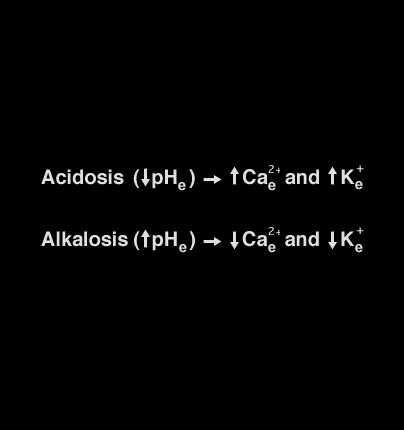
Changes in extracellular magnesium within clinically encountered ranges do not cause significant changes in the action potential or the electrocardiogram. Changes in pH, by themselves, cause slight changes in action potential plateau and might be expected to lengthen the QT interval. However, changes in extracellular PH are invariably associated with changes in ionized calcium and potassium and it is these changes that are responsible for the changes observed in the electrocardiogram. For instance, acidosis is associated with an increase in extracellular ionized calcium and potassium while alkalosis is associated with a decrease in both.
